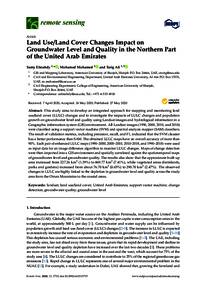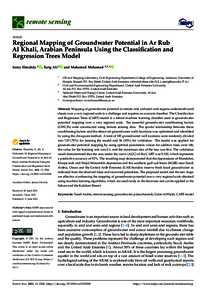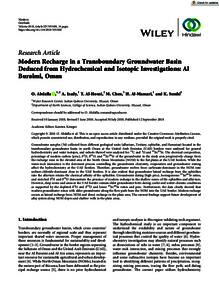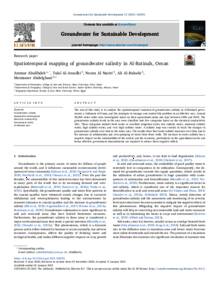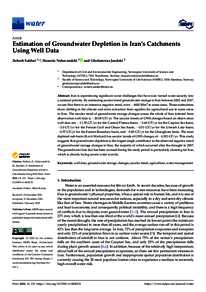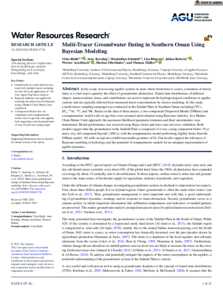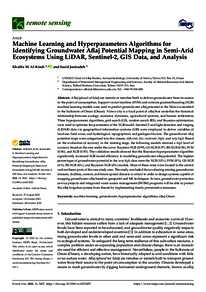Document
Land use/land cover changes impact on groundwater level and quality in the northern part of the United Arab Emirates.
Identifier
DOI: 10.3390/rs12111715
Source
Remote Sensing. v. 12, 11, 1715
Contributors
Mohamed, Mohamed., Author
Ali, Tarig., Author
Country
Switzerland
Publisher
MDPI AG.
Gregorian
2020-06-01
Language
English
English abstract
This study aims to develop an integrated approach for mapping and monitoring land use/land cover (LULC) changes and to investigate the impacts of LULC changes and population growth on groundwater level and quality using Landsat images and hydrological information in a Geographic information system (GIS) environment. All Landsat images (1990, 2000, 2010, and 2018) were classified using a support vector machine (SVM) and spectral analysis mapper (SAM) classifiers. The result of validation metrics, including precision, recall, and F1, indicated that the SVM classier has a better performance than SAM. The obtained LULC maps have an overall accuracy of more than 90%. Each pair of enhanced LULC maps (1990-2000, 2000-2010, 2010-2018, and 1990-2018) were used as input data for an image difference algorithm to monitor LULC changes. Maps of change detection were then imported into a GIS environment and spatially correlated against the spatiotemporal maps of groundwater level and groundwater quality. The results also show that the approximate built-up area increased from 227.26 km2 (1.39%) to 869.77 km2 (7.41%), while vegetated areas (farmlands, parks and gardens) increased from about 76.70 km2 (0.65%) to 290.70 km2 (2.47%). The observed changes in LULC are highly linked to the depletion in groundwater level and quality across the study area from the Oman Mountains to the coastal areas.
ISSN
2072-4292
Resource URL
Category
Journal articles

